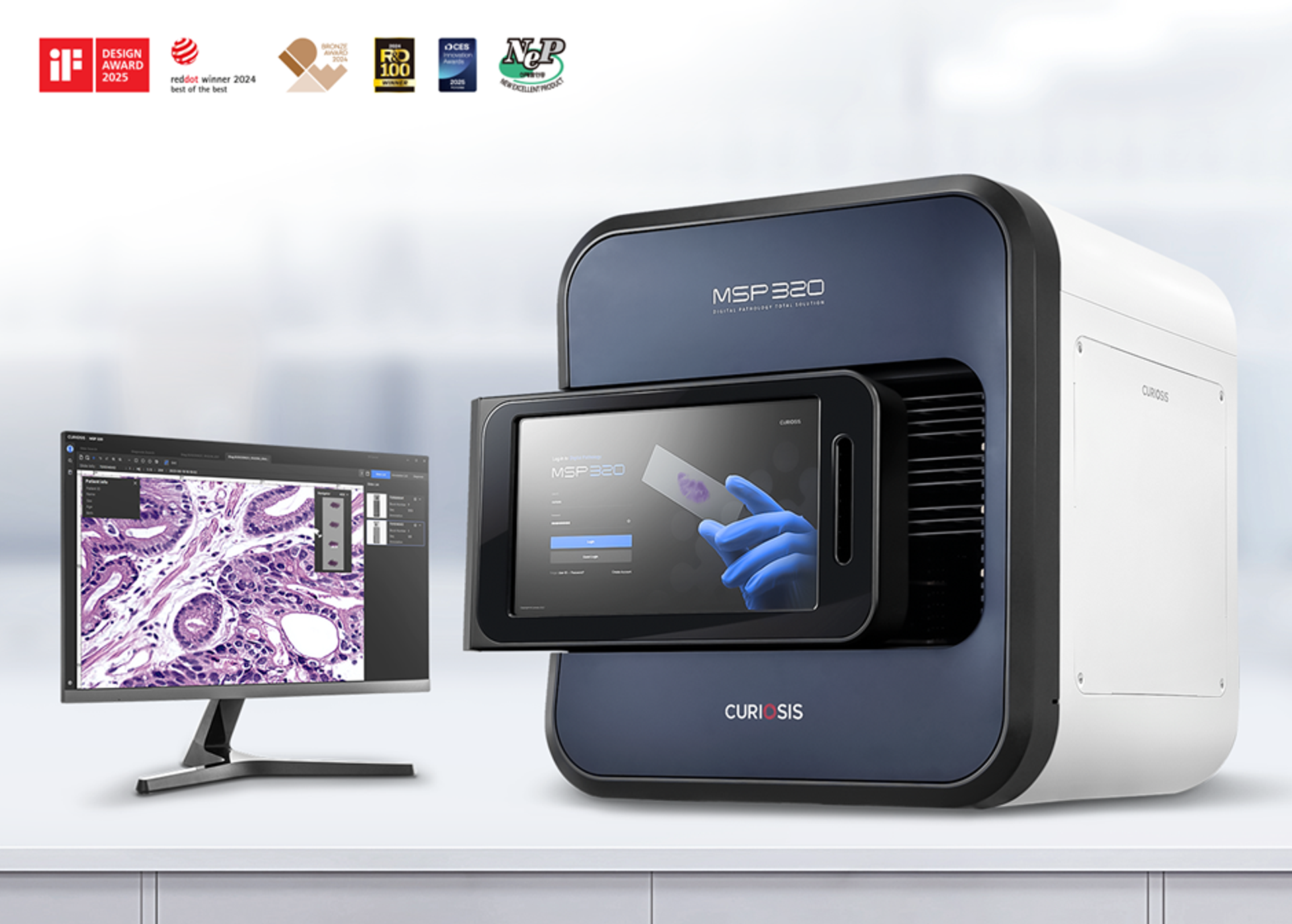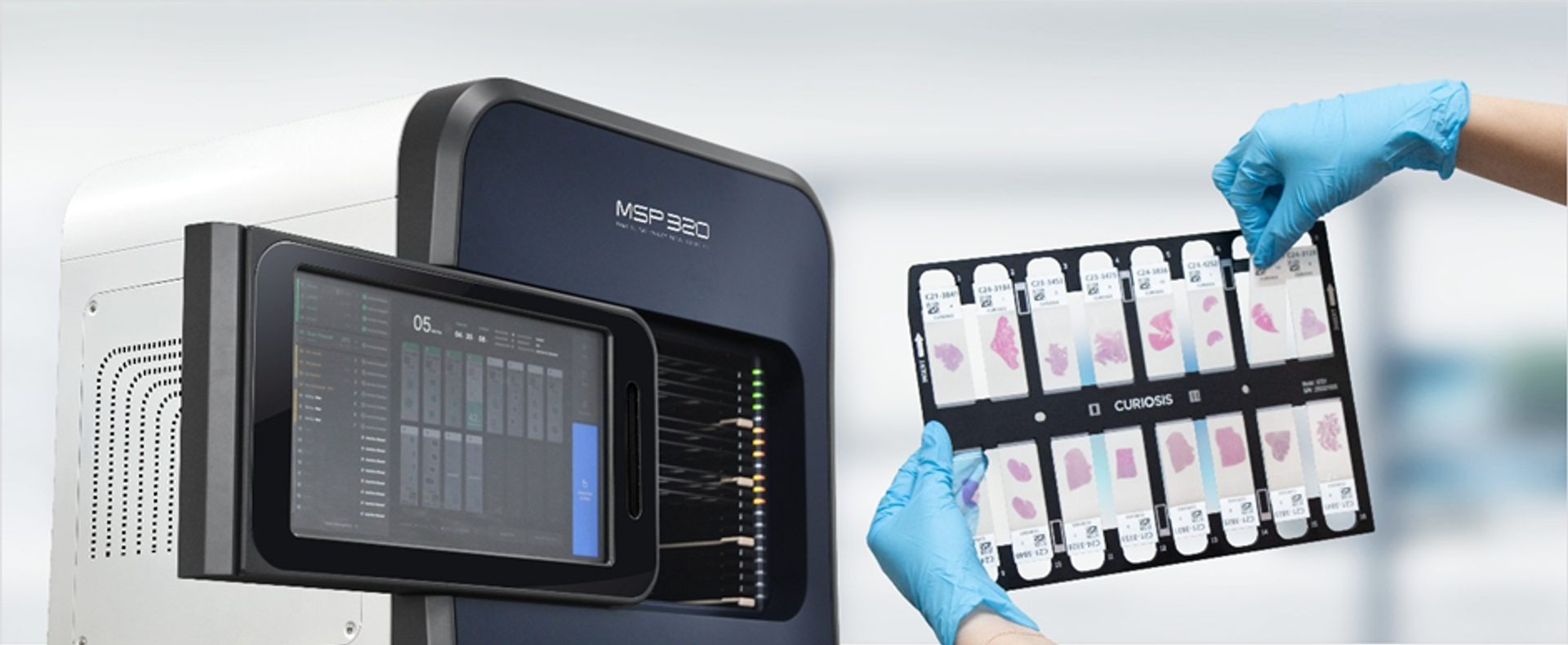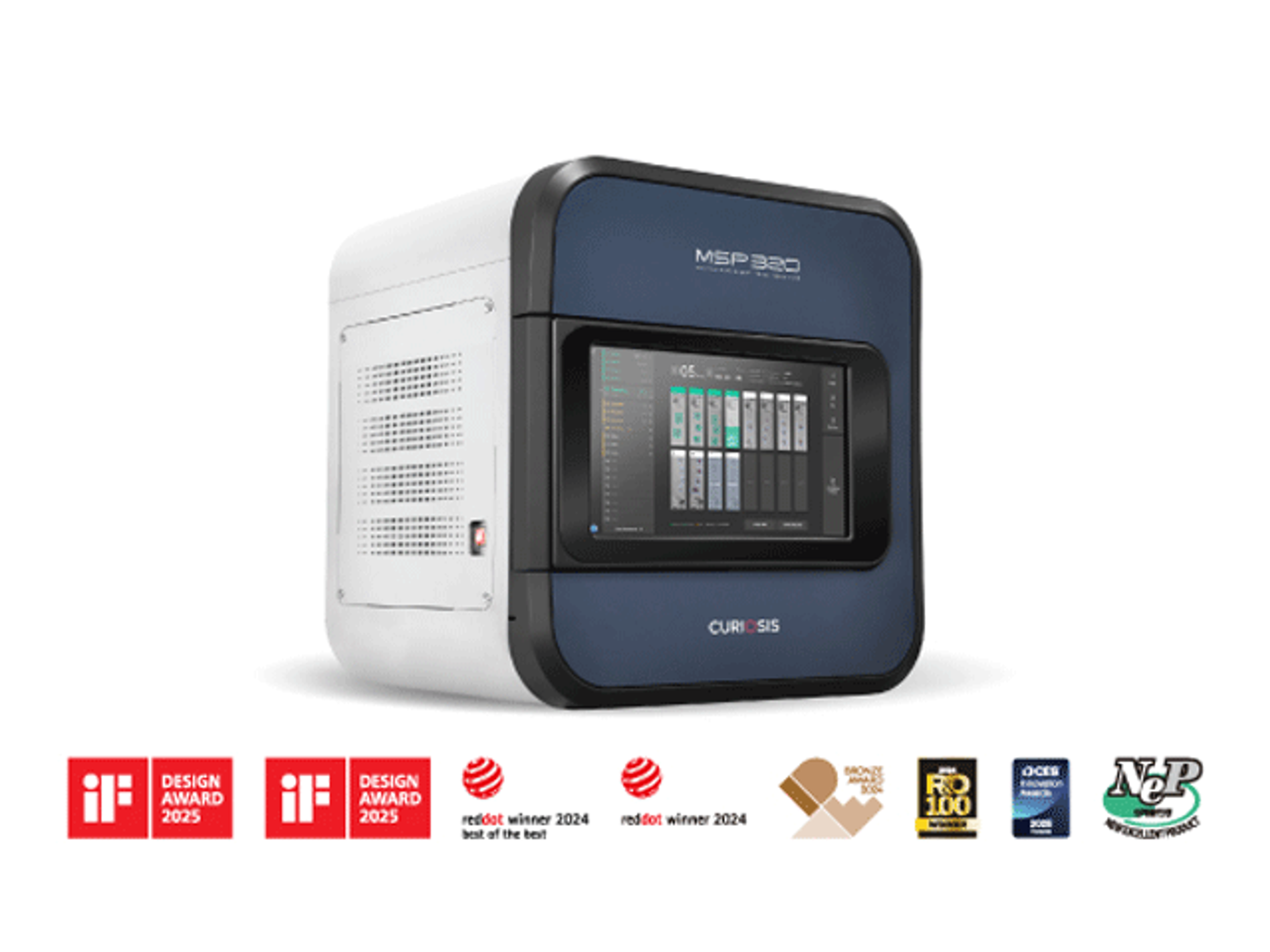Streamline your slide digitization process
Curiosis introduces the MSP™-320, a high-throughput digital slide scanner
18 Nov 2025Pathology laboratories play a central role in cancer diagnosis, but many are being stretched to keep up. Cancer incidence continues to rise and health systems are investing more in pathology, while many labs still rely on microscope-based workflows that are hard to scale. Physical slide handling also introduces breakage or mislabeling risk, and the ongoing shortage of pathologists makes timely collaboration even more difficult. Together, these pressures make a clear case for moving from conventional histopathology to slide digitization that accelerates throughput, standardizes image quality, and enables secure, collaborative review.
Against this backdrop, MSP™-320 offers a practical path forward. It converts glass slides into high-resolution digital images and advances cases through tracking, allocation, and review with far fewer handoffs. With MSP™-320, pathologists can review cases and issue reports from anywhere, enabling rapid second opinions and collaboration across sites, while standards-compliant digital archiving replaces physical slide storage.
Built-in analysis tools strengthen confidence in complex tissues, and tight integration with hospital systems keeps patient data secure and compliant. Beyond routine care, MSP™-320 also enhances education by letting instructors share and annotate the same digital material for consistent, scalable training.

Key features of MSP™-320
1) High-throughput workflow — optimized for high-volume labs
As pathology volumes grow, the scanner can easily become the next bottleneck. MSP™-320 avoids this with one-click, continuous scanning that keeps daily operations steady. It automates tray loading and digitization for batches of up to 320 slides, finishing a 16-slide tray in minutes. Robust motion control and case management keep scans running with minimal operator input. Teams can process large workloads consistently, avoid peaks and stalls, and achieve shorter, more predictable turnaround times.
2) High imaging precision — high-resolution whole-slide images
Digitization only works if image quality matches what pathologists expect at the microscope. MSP™-320’s optical system produces sharp whole-slide images at 0.112 μm/pixel, preserving cellular and tissue-level detail. Precision focus and uniform illumination support confident reading of subtle morphology, while an advanced stitching algorithm merges thousands of tiles with seams that remain virtually invisible — even at high zoom. This level of clarity lets pathologists review complex areas remotely and helps standardize interpretation across sites.
3) Safe and reliable whole-tray scanning — fewer touchpoints, better traceability
Manual slide handling is where cracks, label issues, and mix-ups can happen. MSP™-320 scans entire trays rather than handling slides one by one, reducing touchpoints and improving traceability through tray-level prescan imaging. Its patented A4-size tray detaches easily, secures both coverless and wet slides, and stays stable while robotic modules maintain alignment during high-speed scanning. The flexible tray also accommodates non-standard formats — including oversized mega-slides — so routine surgical pathology and specialized research slides can be digitized in the same workflow with repeatable results.
4) Intuitive user interface and experience (UI/UX) — streamlined setup, monitoring, and review
A 23-inch touchscreen integrated into the front door enables straightforward setup, monitoring, and rapid adjustments. The integrated Image Data Viewer (IDV) provides smooth navigation, up to 800× zoom, and analysis tools for detailed visualization in both research and diagnostic workflows. The interface has been recognized with major design awards, reflecting its emphasis on usability, efficiency, and low training burden.
5) Secure data access and scalable connectivity — for remote reads and multisite services
Once slides are digitized, pathologists need to open them quickly and securely, wherever they are. Paired with an all-in-one server PC, MSP™-320 centralizes secure storage, access control, and fast retrieval. The network architecture supports multisite use behind secure firewalls, linking scanners, IDV viewers, and Image Data Servers (IDS) across hospitals, satellite labs, and offices. High-bandwidth transfer enables rapid remote consultation and second opinions, while consistent policies and integrations help maintain data integrity and compliance as the service expands.

Conclusion
Digital pathology is an operational shift as much as a technology upgrade. MSP™-320 addresses the core hurdles—throughput, precision, and data flow—so labs can scale digitization with confidence. For phased rollouts, its balance of reliability and usability builds momentum quickly while laying the groundwork for future analytics and AI. In a market pushing for faster, more consistent results, Curiosis’ MSP™-320 provides a practical, future-ready path forward.

